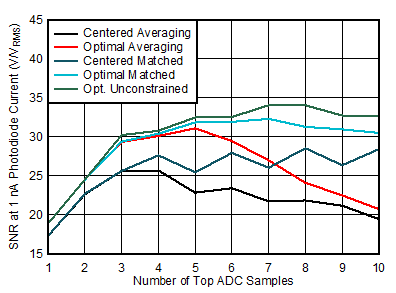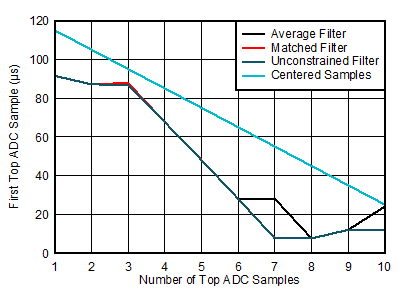SLVAEX3 October 2020 TPS8802 , TPS8804
4.3.2 Varying Digital Filter and ADC Timing
Optimizing the filter by changing the timing of the samples further improves the SNR. Using τ1=15 μs and τ2=15 μs, the SNR at 1 nA for averaging 5 samples improves from 22.8 to 31.1 by taking the first ADC sample at 48 μs instead of 75 μs. The optimized matched filter with 7 ADC samples has an SNR/nA of 32.3. The unconstrained filter has the best SNR of the three filter types, 34.0, achieved with 7 and 8 ADC samples.

| tLED=100 µs | tSAMP=20 µs | τ1=15 µs | τ2=15 µs |

| tLED=100 µs | tSAMP=20 µs | τ1=15 µs | τ2=15 µs |